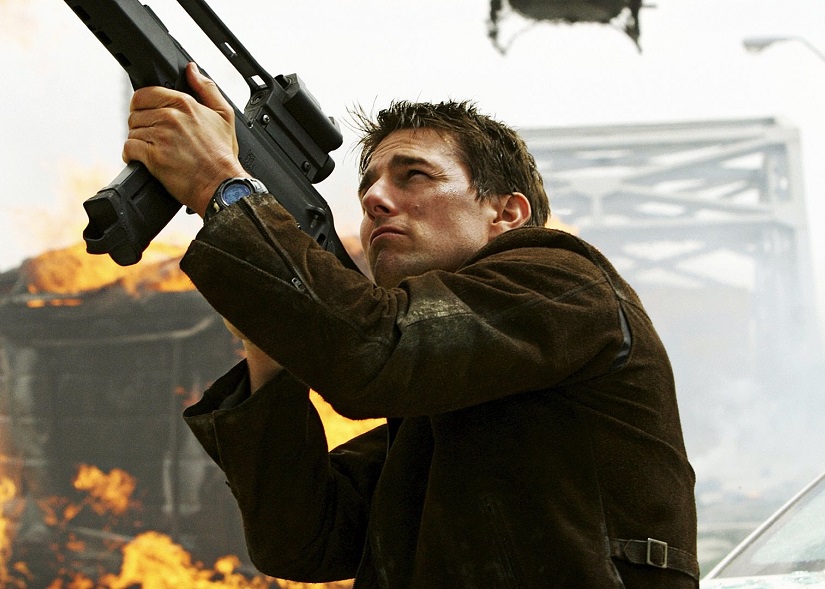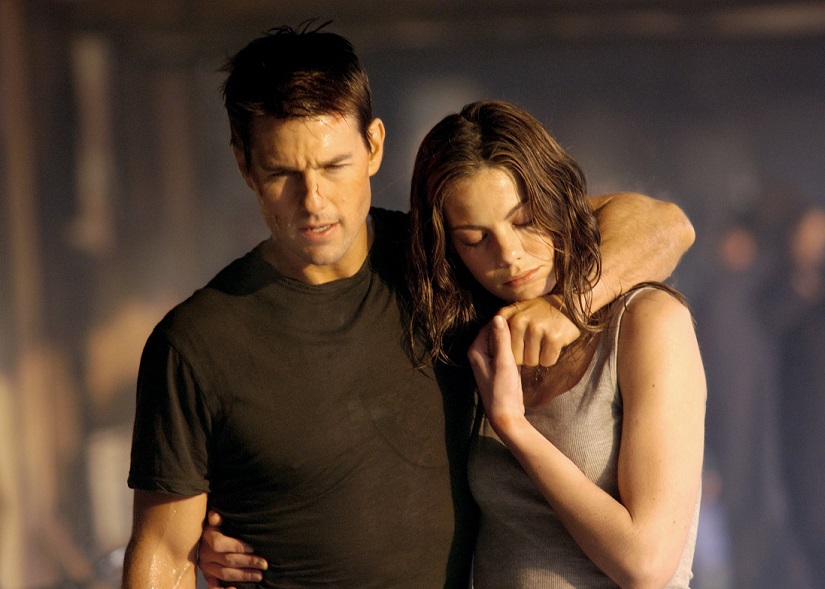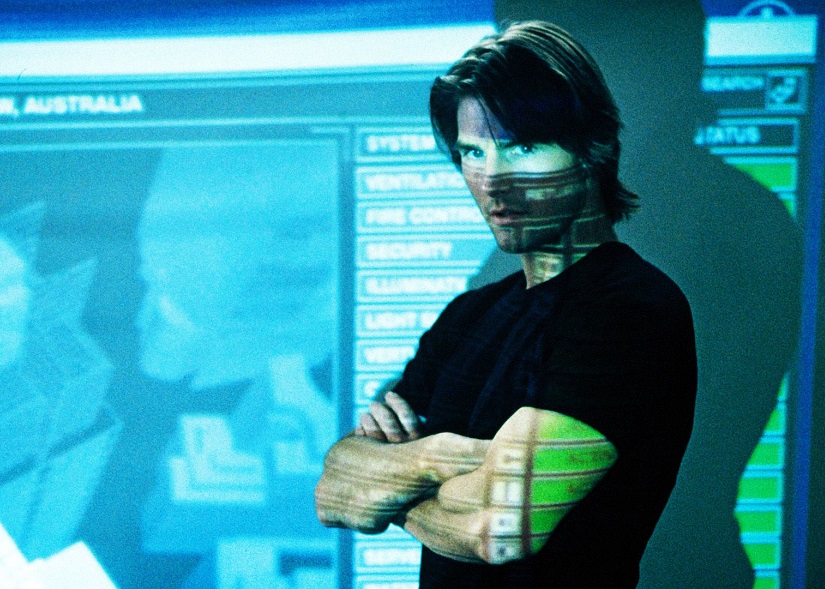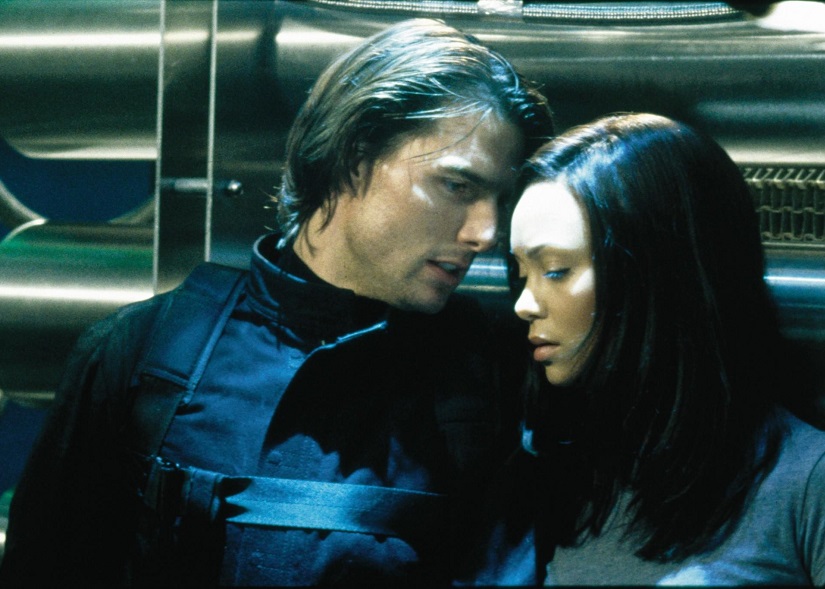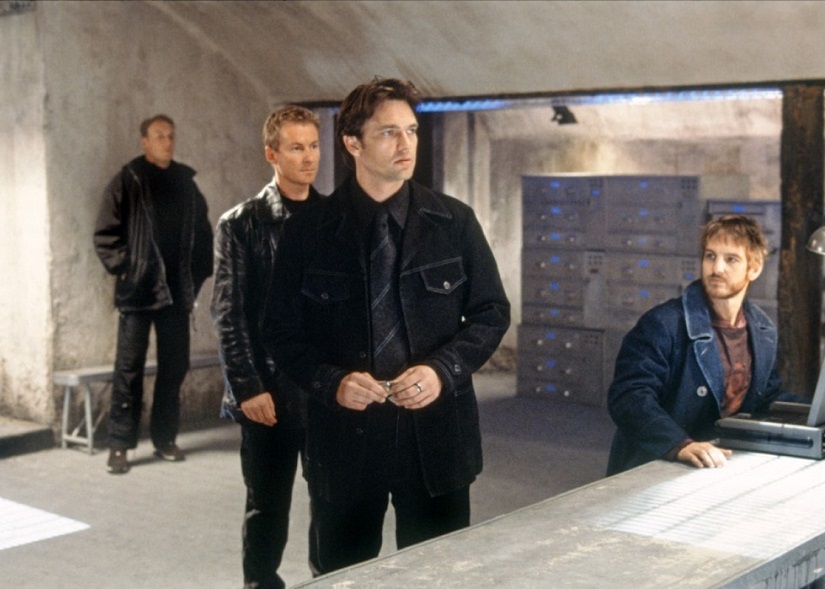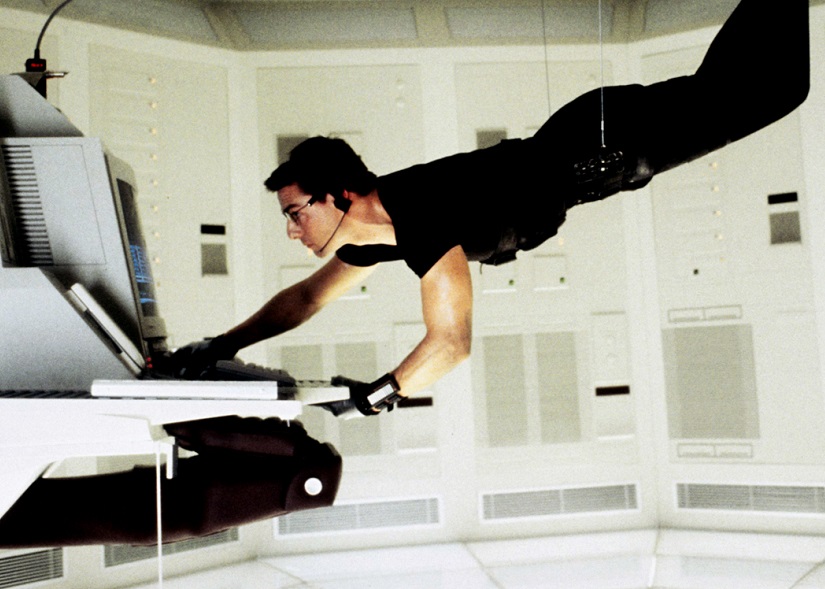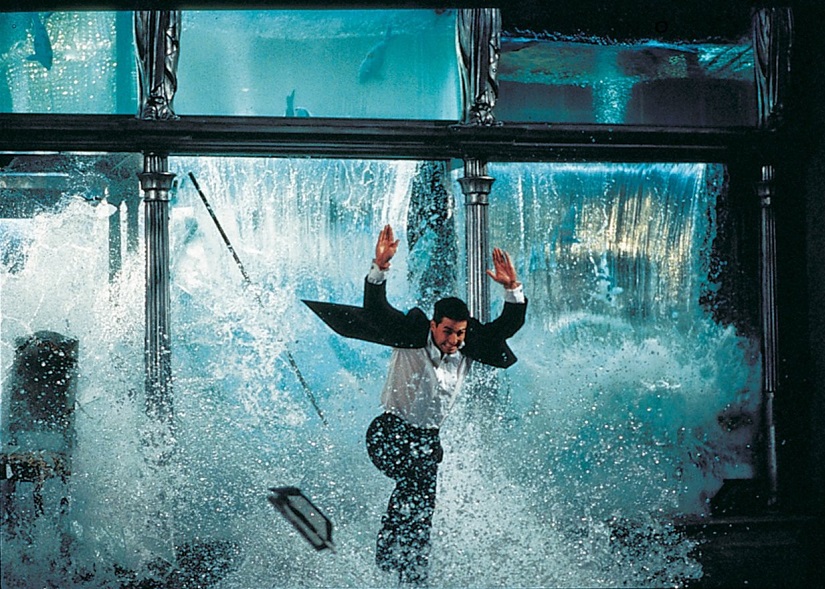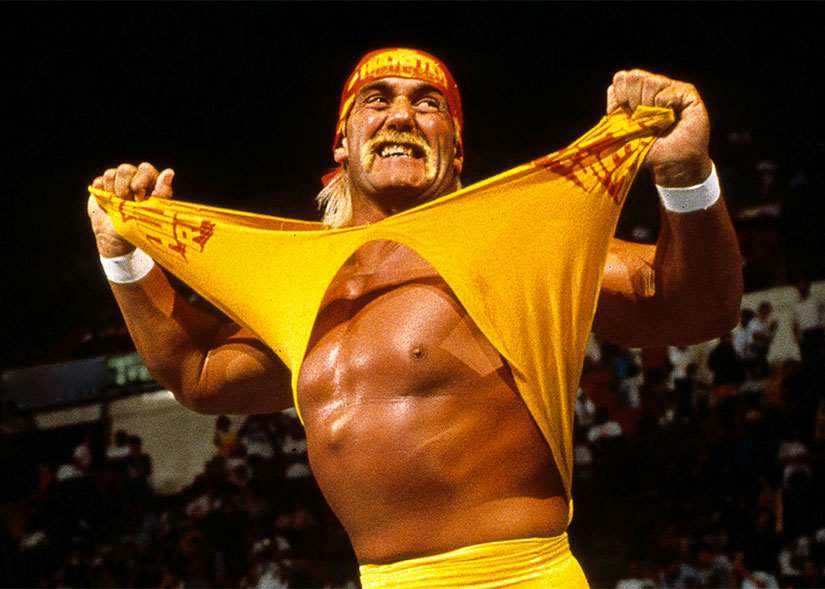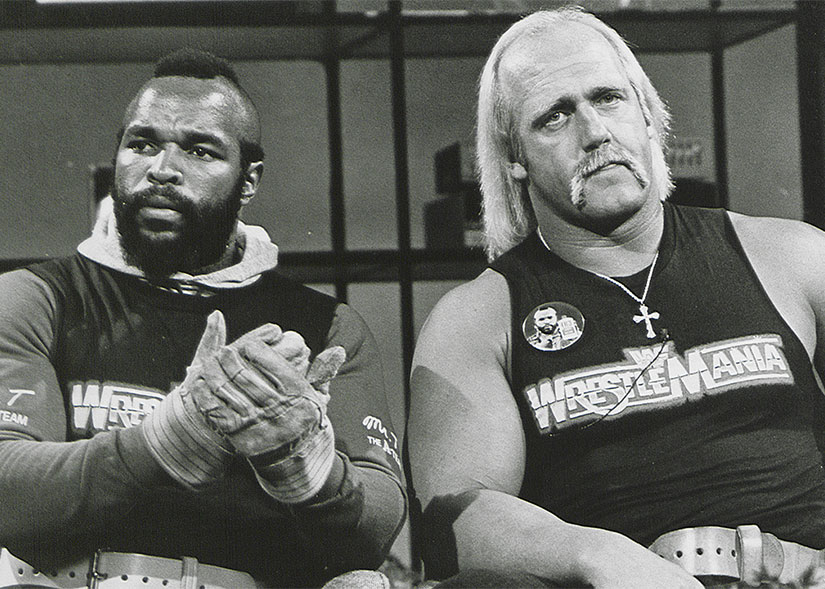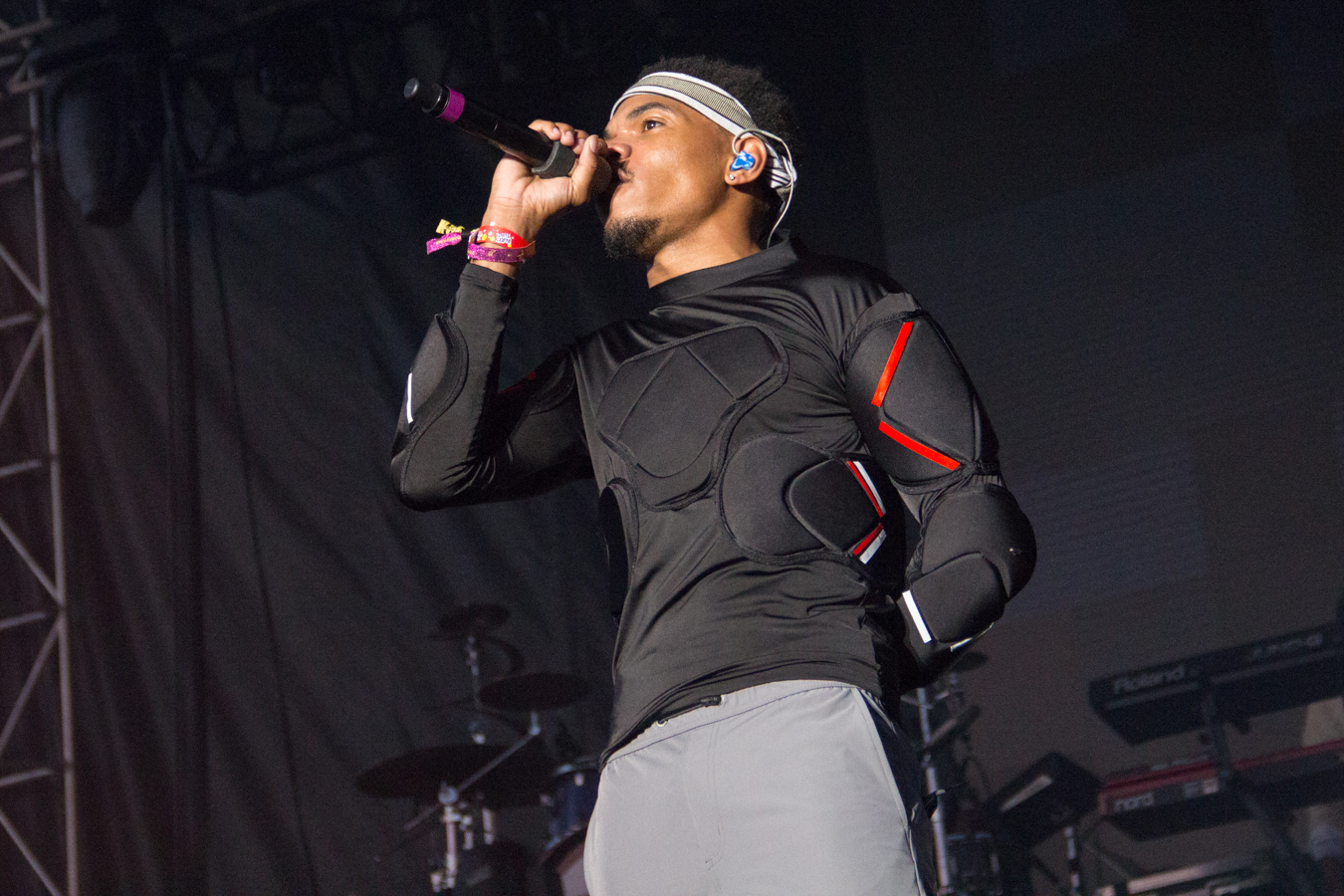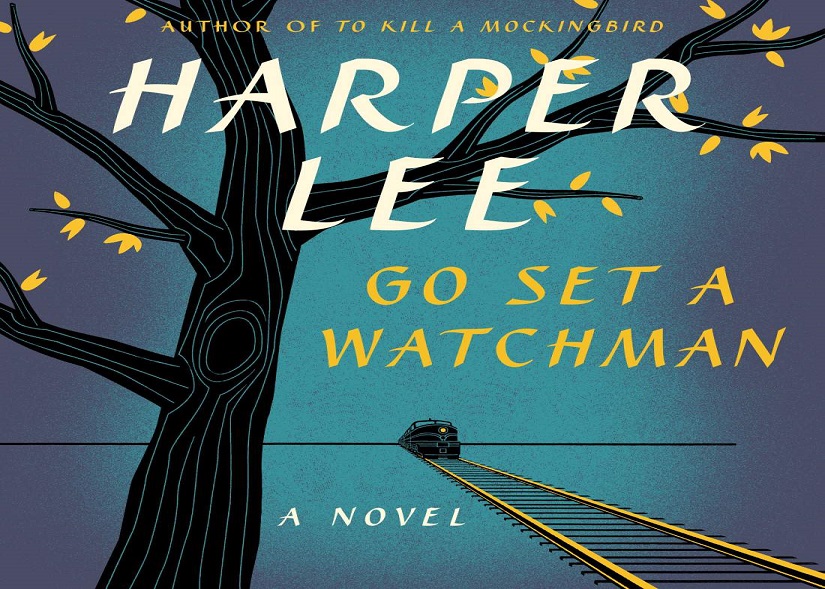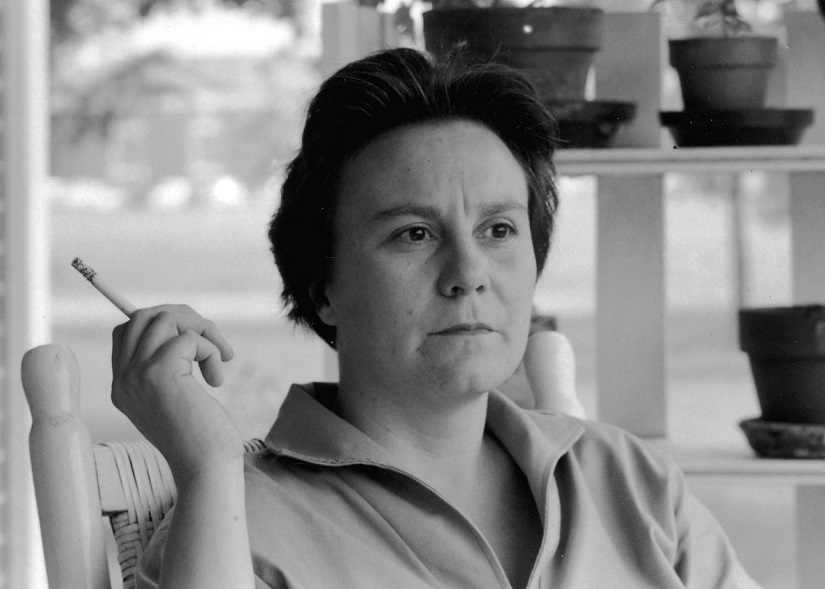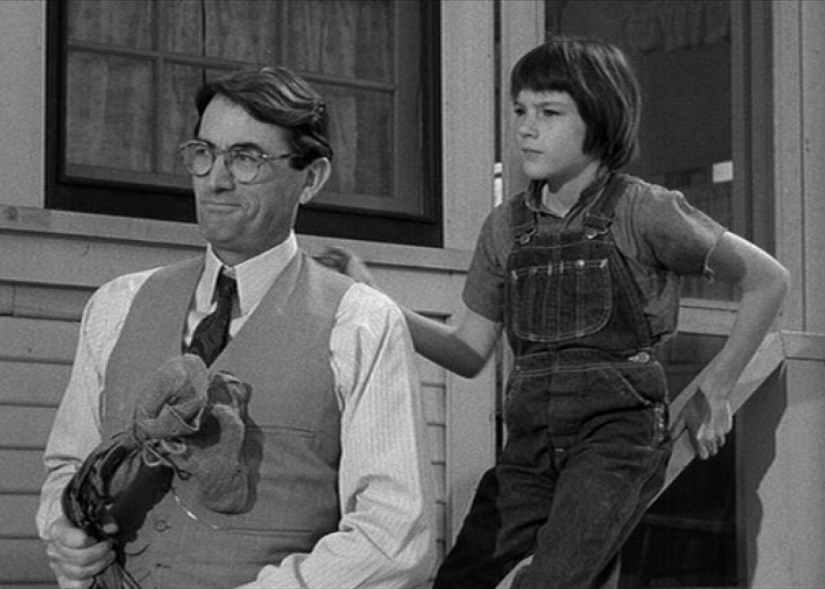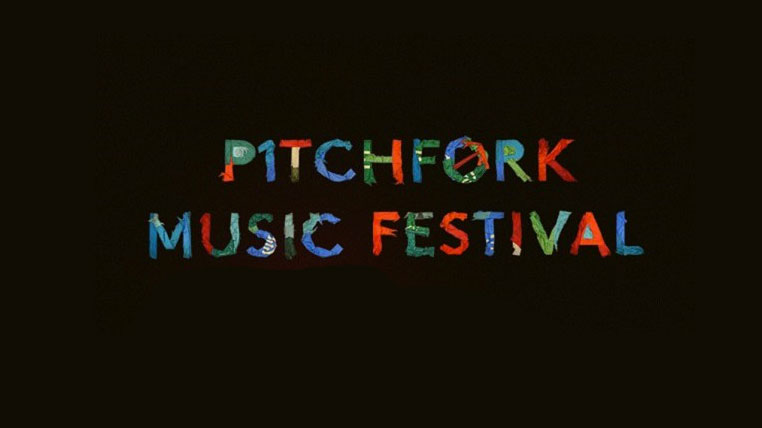Series Recap - Mission: Impossible 3 (2006)
Following the widely-derided Mission: Impossible 2, the series remained dormant for a full six years before JJ Abrams, then best known for his work on TV spy series Alias, was brought onboard to try and resurrect it. Star Tom Cruise was also in need of a vehicle to win back his place in the heart of moviegoers, having undergone a series of PR disasters after unceremoniously firing his agent in 2004. Despite still being a draw at the box-office, with such successes as Minority Report, The Last Samurai and War Of The Worlds under his belt, his star's public persona was seen as increasingly alienating, with his close support of Scientology becoming ever more pronounced.
There's a clear sense in Mission: Impossible 3 of drawing back from the garish excesses of the second movie to something more intimate and character-driven. Having recently married Katie Holmes and with a child on the way, one suspects that public cynicism regarding the authenticity of Cruise's family life may have played some part in the direction that M:I3 was taken. That may give you some clue as to how well it turned out.
Anyone familiar with Alias will immediately recognise why Abrams was brought onto the movie. The plot bears a number of resemblances to motifs employed repeatedly throughout the series, most notably opening in media res and featuring a protagonist struggling to keep his professional life as a spy separate from his personal life. Following his escapades spanking Dougray Scott around in Australia, Ethan Hunt is, in fact, no longer an active field agent but an instructor. His protégé, Lindsey Farris (Keri Russell, playing against type), is kidnapped while investigating an arms dealer, Owen Davian, who is trying to get his hands on a mysterious weapon known as the Rabbit's Foot. Hunt has also found himself something approaching a steady home life, though his fiancée, Julie (Michelle Monaghan), is entirely unaware that his real job is considerably less mundane than the post she believes he's holding down at the Department of Transportation.
If that's seems like a lot of backstory to get through before the plot even begins, you'd be right. The movie starts with the series' most powerful cold open, in which Davian holds a gun to Julie's head and threatens to kill her if Hunt doesn't tell him the location of the Rabbit's Foot by the time he's finished counting down from ten. This short sequence packs in a huge amount of information without betraying the intensity of the scene. While gripped by the sight of the normally cool-headed Hunt descend into pleading desperation as each of his negotiating tactics fail miserably, we're subconsciously absorbing small details (Hunt having someone extremely close to him under threat, the value of the Rabbit's Foot, Hoffman as the villain, etc) to be expanded upon later.
Unfortunately the effortless power of that opening scene doesn't expand to the rest of the film. The plot is heavily streamlined in order to keep things moving, which wouldn't be so bad were so much essential information not left missing or underdeveloped. We have no idea how Hunt and Julia met or why they're attracted to each other beyond physical appearance, or even who they really are as people. Knowing so little about the two characters makes investing in their relationship a real mission: impossible (badum tish) as neither is given the slightest bit of depth either individually or as a couple. Monaghan's natural sweetness almost pulls it off on her end, but Cruise has never seemed more robotic or unnatural. The scene in which Hunt throws a party to meet Julie's family shows him descending into outright creepiness, as he starts reading people's lips and injecting himself into their conversations. As mentioned previously, playing romance has never been Cruise's strong point and the straight-faced nature of his scenes with Monaghan make the uncanny valley of his performance as Likeable Human Male all the more pronounced.
The spy stuff is more interesting by default, but still feels strangely hollow. The heavy use of colour grading in any scene set in an urban or industrial environment overemphasizes the blues and oranges to such an extent that the movie often has the look of a particularly offputting DVD cover. Abrams' direction is acceptable, but while it's a relief not to endure any more of Woo's tiresome flourishes, his inexperience on film is painfully obvious. He shoots with the technical precision required on television, but fails to establish any sense of grandeur. The entire movie feels like a (remarkably expensive) feature-length series finale, only becoming truly cinematic in the terrific sequence in which Hunt's convoy, carrying the captive Damian, is assaulted by air while crossing the Chesapeake Bay Bridge-Tunnel. The narrative streamlining also makes it difficult to invest in the plot, as keeping the nature of the Rabbit's Foot secret means there's no sense of the scale of the threat in question. Simon Pegg's Benji postulates a theory about it being the anti-God, but the suggestion is so over-the-top, and immediately dismissed by the character himself, as to be nothing more than empty hyperbole. The intention is obviously to keep the focus on the personal stakes for Hunt after Julie is kidnapped, an admirable goal which flounders due to that relationship being similarly underwritten.
What does work is Philip Seymour Hoffman's performance as Davian. Rather than going full-on with boorish villain theatrics, Hoffman takes an unexpected road by imbuing Davian with a chilling, sociopathic stillness. He may not be the most physically dangerous antagonist Hunt has faced, but he's aware that the morality restricting the actions of Hunt's team makes him effectively invincible. His calmness is a sinister reflection of his absolute confidence and amorality, making him a grippingly atypical foe for the genre. Also fun is the set-piece in which Hunt breaks into the Vatican, which features a number of strong visual gags (and a mesmerising effect in which Hunt's Hoffman mask seemlessly transforms him into Hoffman) and an interesting location missing from the factory/skyscraper infiltrations which make up two of the movie's other major set-pieces. It's just a shame Hunt's team suffers the depth deficiency which diminishes all the movie's major characters, though there's at least a genuine sense of friendship between Hunt and his three-time partner Luther (Ving Rhames), while Maggie Q is just natural enough in her performance as Zhen Li not to disappear as thoroughly as Jonathan Rhys Meyers' Declan, who is notably solely for his terrible Irish accent.
The movie rediscovers its verve a little for the Shanghai-based climax, but even then struggles to elevate itself to heights above forgettable adequacy. True, that's a huge step-up from M:I II, but hardly the sort of recommendation needed to revive a series struggling for relevancy in the wake of the hugely successful Jason Bourne movies and Daniel Craig's soon-to-be-lauded debut as James Bond in Casino Royale. Fortunately, the fourth entry in the series, Ghost Protocol, would find in Brad Bird a director capable of marshalling the series' disparate tones into something more enjoyable and distinctly its own. Check back tomorrow for the final entry in our series recap.
Series Recap - Mission: Impossible 2 (2000)
While Brian De Palma's Mission: Impossible was a financial and criticial success, questions about its hard-to-follow plot were seemingly taken to heart when producers Tom Cruise and Paula Wagner sought to redirect the sequel away from the original's atmospheric blend of summer blockbuster and old-school action thriller and into more unashamedly spectacular action territory. The hot action director at the time was John Woo, coming off the back off a number of successful American ventures after establishing his name with the likes of The Killer and Hard Target in his native Hong Kong.
The kindest thing that can be said about Mission: Impossible 2 is that it's sort of interesting for being a movie which bears virtually no resemblance at all, in plot, characters, tone or visuals, to its predecessor. Cruise's character may be once again called Ethan Hunt, but to all intents and purposes, the protagonists of the two films manage to be completely different men despite both being largely blank slates in terms of personality. Woo's melodramatic style, matching heightened action with ludicrously hammy symbolism and near-abusive quantities of slow motion, certainly has its lurid charms when expressed in full, self-mocking regalia - see the wonderfully barmy Face/Off - but is made instantly insufferable by being used as a misguided tool to enhance the cool factor of its star.
Every frame of Mission: Impossible 2 reeks of pandering to megastar Cruise's ego. Woo's camera is never shy of zooming in at just the right time to remind the audience of the actor's toughness, rebelliousness, sensitivity, or just for one more look at that sexy, sexy Tomface. Having been more intellectual than fighter in the previous movie, Hunt grew his hair into an Aaron Carter mop in the interim and realised thinking was for dorks. After all, why strain the ol' brain when the possibility exists to instead thump someone in the face with a flying kick, or engage in a little motorbike foreplay with the Scottish doppelganger with whom you share a girlfriend? To describe the movie as substance-free is an insult to things which don't exist. It's so monumentally vapid and self-involved that it makes existing things want to disappear until it's all over.
The small moments of irony which do sneak through are among the movie's most enjoyable, although that's not saying much. It could be suggested that Woo was trying parody a certain kind of overwrought, star-driver blockbuster, but even if true, the few moments in which the satire registers are greatly outweighed by its extensive pandering to that same formula. Villain Sean Ambrose, played with all the toughness of a wet flannel by Dougray Scott, is supposed to be the anti-Ethan, but Ethan himself is such a non-entity that Ambrose himself just comes across as a preening, petulant pronk. His two moments of success both come in mocking Ethan, once describing how the hardest part of imitating him - more on that in a moment - was having to "grin incessantly for fifteen minutes" (more a jab at Cruise than Hunt) and later in contrasting his own 'kill first, think later' approach with Hunt's eagerness to perform "some aerobatic insanity before [risking] a single hair on a guard's head". It's worth noting that this is the first movie in which Hunt is shown performing anything like aerobatics, and while he was undeniably something of a pacifist in the first movie, here his approach is every bit as driven by guns and fists (steady) as Ambrose.
Leaving aside Scott's flaccid performance, what little sense of danger Ambrose might have possessed is dissipated the moment he's shown to be so blindly lovestruck by his ex-girlfriend, Nyah, that he willingly invites her into his lair despite it being such an obvious trap that he himself notes the contrivance of the whole scenario. The risk doesn't matter, he explains to his bodyguard, Stamp (played by Richard Roxburgh), because he knows she's a snitch and will get rid once he's bored of having sex with her. If that doesn't sound like an altogether honourable way of handling a female character, it's as good as it gets for poor Thandie Newton. The first scene positions Nyah as a master thief, only for those skills (bar one instance of straightforward pickpocketing) to be consciously discarded in favour of making her the rope in a tug of war between hero and villain over who gets to have sex with her. Like many 'strong female characters', she does all the sassy posturing supposedly proving her an equal to the menfolk - although if that were true, she wouldn't be required to prove it - only for the narrative to reduce her to a brainless plaything for Scott and Cruise, whose career-long inability to convincingly play romance is emphasized to a painful degree here with such clunking lines as "My God, you're beautiful". I do like her name though - Srta Nyah Nordoff-Hall - so that's something.
Let's also talk about the face masks, a fun little gimmick in the first movie but used incessantly here. The plot starts off with Ambrose 'doubling', needlessly, for Hunt, then continues in that vein throughout, with everyone seemingly having a mask of everyone else just in case it happens to come in handy. Yes, it's supposed to emphasize Ambrose and Hunt being the same person on opposite ends of the moral compass - much like the pathogen and antidote making up the movie's Macguffin and described by Dr. Nekhorvich, their Einstein-y creator, as villain and hero - but such symbolism doesn't follow through when you have Hunt imitating Nekhorvich and Stamp as well. What's that supposed to symbolise? Instead it functions as lazy shorthand to engineer some decidedly unshocking twists into a plot which could not be more rote if it tried: Ambrose wants to loose the Chimera virus on Sydney to increase the value of the shares he owns in the company manufacturing the antidote.
Sydney also makes a resoundingly dull location, having so little identity on-screen that the best settings the movie can muster up are a racetrack, a skyscraper and a bunker, with a remote sheep farm thrown in for good measure. The city dominates the movie's running time, but there's so little sign of any local history, unique architecture or culture that a very brief excursion through Seville offers infinitely more flavour in a tiny fraction of the time. It's a hollow location for a thoroughly hollow movie, a stark contrast in every way to its complex, compelling predecessor. Action movies don't need to be intelligent or even make a great deal of sense, but do need to offer something more than an excuse for the star to posture and prance about the place trying to remind everyone of what a badass he thinks he is, even when the embarrassing transparency of the act is immediately apparent to everyone forced to endure it.
It's no surprise M:I II (yes, that's the official abbreviation) marked the start of a downturn in Cruise's career, to the extent that when the series' second sequel was released a full six years later, his deteriorating public image was seen to have a negative impact on the movie's marketing. Check back here for my coverage of that movie tomorrow.
Series Recap - Mission: Impossible (1996)
Ahead of the release of Mission Impossible: Rogue Nation this Friday, I'm going to be looking back at the four previous installments in the series to chart the evolution from one film to the next and see how well they individually hold up. The M:I movies are especially interesting in this regard because where most action blockbuster franchises settle into a bland uniformity once the sequels start churning out, each entry in this series is most notable for how different they all are from each other. Even the Bond series, which over its fifty-odd year history has reinvented itself time and time again, does not come close to the tonal disparity existing between each new M:I release.
The original, directed by Brian De Palma, remains my favourite and the most tonally distinct of the four to date. Where John Woo's sequel, which I'll cover tomorrow, turned the series' focus almost exclusively to big-budget action, De Palma's Mission: Impossible is more interested in plot and atmosphere than large-scale shootouts or big action set-pieces. True, the climax in the Channel Tunnel is as enjoyably loopy as anything which would follow, but the film leading up to it channels the intricately plotted Cold War spy thrillers of the '70s rather than the typical blockbuster fare of the time.
The plot starts off with a mission to retrieve a leaked list of undercover agents going horribly wrong, leaving Ethan Hunt the only surviving member of his team. Under suspicion of being a traitor, Hunt sets about following leads to uncover the person who really betrayed him. At the time, the movie was mockingly referred to as Mission: Impenetrable for its convoluted storytelling, possibly one of the reasons why subsequent entries in the series have kept plotting to a bare minimum. De Palma's film has its share of twists, but isn't especially difficult to follow for anyone paying attention. There are perhaps a few too many ancilliary details introduced around the margins, but the plot unravels for the most part in fairly straightforward fashion.
If anything, that slight overcomplexity feeds nicely into the spirit of the genre that the film most closely emulates. The '70s saw the thriller genre become heavily politicised, reflecting the paranoid escalation of the Cold War and the sense that even one's own government was not to be trusted. The heroes of the time frequently found themselves questioning old loyalties and struggling to comprehend the far-reaching implications of the situations they found themselves in. Hunt starts out as the quintessential company man, loyal to a fault to his mission and his team, yet finds himself having to collaborate with an arms dealer, Max, and steal from CIA Headquarters, in the movie's exquisitely tense signature scene, the very list he was initially assigned to protect. In other words, to prove his innocence he has to do exactly that which he was wrongfully accused of doing in the first place.
That level of moral complexity is something the series abandoned immediately afterwards, which is a shame since it elevates the material so compellingly here. De Palma has great fun playing with the tropes and visual stylings of the genre, creating a rich atmosphere which adapts to the changing mood of the narrative. The first act, in Prague, is drowning in Third Man-esque shadows as Hunt finds himself alone, in constant danger and straining to make sense of a puzzle for which he seems to be missing all the crucial pieces. As he is forced to compromise his old certainties to make progress, the dominant colour scheme shifts from deep black and blues to greys and browns, emphasizing the new world of moral murkiness that the movie inhabits. As his plans start to come together for the third act climax, so too does the movie become more boldly colourful.
De Palma's love of genre cinema made him a perfect fit not only for emulating the style of old-school thrillers, but subverting it as well. Turning Jim Phelps, the only character to carry over from the TV series, into the villain was one hell of a ballsy move, not to mention an immensely controversial one at the time, but plays brilliantly into the movie's themes of shifting loyalties and political cynicism. Casting Vanessa Redgrave as arms dealer Max was similarly inspired. Redgrave turned what could have been a rote and uninteresting supporting character in the hands of a man into something far more devilish. Just as James Bond's boss, M, had recently been recast as a woman in GoldenEye (1995), the female Max reflected the growing influence of women in all areas of society, while also subverting the femme fatale trope so beloved of the genre. Max is sensual and slyly predatory, using flirtation as both a tool to achieve her ends and a mask to cover her ruthlessness. She's exactly the sort of boldly defined supporting player that later movies have so noticeably lacked, especially with Redgrave, a character actress par excellence, finding just the right level of dry wit to leverage the movie's sometimes over-serious tone.
Max's experienced, manipulative sensuality exists in stark contrast to the youth and relative sexlessness of Tom Cruise's Hunt. Even across four movies, Hunt has never found much by way of personality, but that blank slate quality works in his favour here by stripping him of much of the overblown machismo blighting so many action heroes then and now. Cruise's portrayal skews closer here to the Jeremy Renner character from Ghost Protocol: a highly competent field agent whose primary skills are in analysis rather than action. Indeed, he barely kills anyone until the movie's end. This intelligence is emphasized in one of the movie's most inspired scenes. Phelps, having returned from the dead, recounts a falsified version of how he survived his apparent assassination at the beginning of the movie. Hunt vocally accepts the story, all while mentally mapping out what really happened and confirming Phelps as the traitor. It's an audacious piece of narrative trickery in which De Palma sets dialogue and visuals against each other to simultaneously advance the plot and enrich our appreciation of Hunt's talents.
While the series would certainly go on to have its share of successes, that this early subversive streak and focus on atmosphere and plot were so thoroughly abandoned is a great loss. Mission: Impossible is not a perfect film by any means, but is a more faithful and interesting adaptation of its source material than all which would follow, while also being unafraid to subvert it to create its own big screen identity. Cinema could do with more heroes like this early Ethan Hunt, a more intellectual, even slightly nerdy version of the generic action man he would turn into for the following movie.
Hulkamania Has Finally Run Dry
"Train, say your prayers, eat your vitamins, be true to yourself, true to your country - be a real American," Hulk Hogan used to say. What happens when your hero turns out to be everything he stood up against?
Throughout the '80s and '90s, Terry Bollea, better known as the larger-than-life Hulk Hogan, was pushed as the face of World Wrestling Federation (as World Wrestling Entertainment was known as back then) at a pivotal time when wrestling was universally praised and reaching a new height in its popularity. During this time, Hogan essentially became the face of American pop culture as Hulkamania ran wild on magazine covers, TV shows, shirts, toys, cartoons, and more.
[youtube id="JD4Y6TqmAfY"]
However, The National Enquirer, in collaboration with Radar Online, recently got wind of Hogan's racist tirade during "pillow talk" on a sex tape that was recorded several years before clips and images were leaked by Gawker back in 2012. During a conversation about Hogan's daughter, Brooke, the wrestler aired his grievances to his partner, Heather Clem, about her failing career:
I don't know if Brooke was fucking the black guy's son. [...] I mean, I don't have double standards. I mean, I am a racist, to a point, fucking n****s. But then when it comes to nice people and shit, and whatever. [...] I mean, I'd rather if she was going to fuck some n*****, I'd rather have her marry an 8-foot-tall n***** worth a hundred million dollars! Like a basketball player!
[youtube id="P05qxH2pISQ"]
In a surprising response, the WWE has fired Hogan from his contract, removed him from their iconic Hall of Fame, ceased production and sale of his merchandise, and have practically wiped away all mention of him on their website. Removal of other Hulk Hogan, like documentaries and matches housed on the WWE Network, the company's On Demand subscription service, may soon follow. The company released a statement concerning Hogan's firing:
WWE terminated its contract with Terry Bollea (aka Hulk Hogan). WWE is committed to embracing and celebrating individuals from all backgrounds as demonstrated by the diversity of our employees, performers and fans worldwide.
However, this isn't the first time Hogan has been publicly exposed as a racist. Despite a Shade 45 interview that took place in 2012 in which Hogan very openly and comfortably used the n-word to describe his friendships with various rappers like Birdman and Lil' Wayne and former WWE wrestler Booker T, WWE never went to this level to distance themselves from the very person that helped them achieve success.
For all intents and purposes, this is the end of Hulk Hogan as we know it, especially considering he was essentially the face of American culture at the height of his popularity. There's no turning back from racist tirades, as evidenced in recent years by Donald Sterling, Michael Richards, and Donald Trump, as it ought to be.
And yet, given the landscape of modern American sociology that has been focused on combating racism and other forms of inequality over the past several years, the Hulkster's theme song's claims of him being "a real American" carries with them a sense of irony following the revelation. 30+ years after he transcended wrestling and became an American cultural icon, has Hogan indirectly come to represent the modern white American male in the spotlight?
For his part, Hogan has issued an exclusive apology to People Magazine following the allegations:
Eight years ago I used offensive language during a conversation. It was unacceptable for me to have used that offensive language; there is no excuse for it; and I apologize for having done it.
This is not who I am. I believe very strongly that every person in the world is important and should not be treated differently based on race, gender, orientation, religious beliefs or otherwise.
I am disappointed with myself that I used language that is offensive and inconsistent with my own beliefs.
If Hulk Hogan ever returns to the ring, with his hand to his ear in one of his many iconic poses, he should be met with total and complete silence. Hulkamania has finally run dry.
Inside Chicago Police's Secret Cell Phone Spying Agreement with the FBI
Post written by special guest contributor, Freddy Martinez.
Over roughly the last year I've worked to uncover quite a bit about cell phone spying that Chicago Police has been doing since at least 2008. CPD has been quietly purchasing IMSI catchers (usually called Stingrays), which they describe as “military-grade electronics” which act as fake, portable cell phone towers to track cell phones. These Stingrays are capable of identifying all cell phones in a given area (roughly 1 Km in diameter, depending on the power used) and “filtering” out to a given wanted IMSIs (roughly, a number plus other identifying information). The basic function of an Stingrays is to show up to an arbitrary location, begin transmitting as a “real” cell phone tower, invalidating your current phone connection and forcing your phone to hand over its information. This information could mean dialed numbers, text message information, even your voice content all without a warrant. Through the Freedom of Information Act (and two FOIA lawsuits), we have learned that CPD claims to have no written procedures for when these Stringrays are deployed and further that the police department claims to have no records of this “military-grade” equipment being checked in and out of their Technology Lab.
Across the country we have seen that police departments have been signing non-disclosure agreements (NDA) with the FBI and Harris Corporation which forces them to keep quiet on how Stingrays are deployed. In Erie County, New York, the ACLU fought all the way to nearly the Supreme Court of New York to force a police department to disclose its NDA. In fact, when CPD purchased their Stingray, they also signed an NDA with Harris and the FBI We have obtained a fully Non Disclosure agreement between from Chicago Police and the FBI and are publishing it here for the first time.
In analyzing the NDA, we notice this is the exact same NDA signed by the Erie County and CPD with the FBI and Harris Corporation. This indicated these agreements are boilerplate and used to hide critical records from the public. In fact, the police are not allowed to even buy the equipment unless they alert the FBI to routine public records requests. And both Erie County Sherrif'sand Chicago Police should “at the request of the FBI, seek dismissal of the case in lieu of using or providing, or allowing others to use or provide, any information concerning the Harris Corporation wireless collection equipment.” (page 6) So in the same breath that they claim this technology can save lives from dangerous criminals and terrorists, the case work could be thrown out at the direction on the FBI. It's a perplexing level of secrecy for local police to engage in.
Of course, the NDA is not just the entire story, but part of a pattern of secrecy around Stingrays and their use. As previously mentioned, CPD claims to have no record of ever deploying the Stingrays or checking it and out of Tech Lab. Yet at the same time, they claim that court records are exempt under US code (18 U.S. Code § 3123) Pen Register/Trap and Trace provisions, which was significantly expanded after 9/11, and which CPD claims as the legal basis for their authorization. This is particularly relevant since PR/TT does not require a warrant for records, which might conflicts with IL SB 2828 law for real-time location tracking. On top of the secrecy around FOIA, cops have gone so far as to invent Confidential Informations to attribute information to instead of showing Stingray use in court. And this pressure to local police seem to be coming from the top levels of Obama DoJ. All of this is organized from the federal level down and Chicago Police seems to have no issue with the vast secrecy.
As our FOIA case progresses, we hope to share further updates with readers in this space.
[RH Video] Chance the Rapper Closes Out Pitchfork Music Festival 2015
[iframe id="http://cdnapi.kaltura.com/p/1859091/sp/185909100/embedIframeJs/uiconf_id/28773021/partner_id/1859091?iframeembed=true&playerId=kaltura_player_1437587861&entry_id=0_mscjlojs&flashvars%5BstreamerType%5D=auto"]
Header by Vanessa Bly, video by J. Frank Visuals
It's been an amazing run for Chance, and his Sunday night-cap performance to close off Pitchfork Music Festival 2015 is just one of the many, many major highlights of his career. Even for just a moment, it felt like Chicagoans in attendance could come together and show support for one of its hometown heroes and ignore every ounce of negativity that has been afflicting the city.
If you couldn't make it out to Pitchfork this past weekend, check out this mini-video recap of Chance the Rapper's AMAZING Pitchfork set, shot and edited by J. Frank Visuals!
[Review] Go Set A Watchman
The circumstances surrounding the publication of Go Set A Watchman have been sufficiently well documented and debated that there seems little need to retread that ground here. Whether or not you choose to buy the book as a result of its questionable journey into print is one best left to your own conscience rather than a thousand words of a reviewer wrestling with his. The core matter to be dealt with is simply whether or not it is a worthwhile book. My answer would be an emphatic yes.
It must be noted that it is also a tremendously challenging book, a long way from the moral simplicity of To Kill A Mockingbird, the novel it was later redrafted into but to which it now serves as a pseudo-sequel. Much has already been written about Atticus Finch being revealed as holding pro-segregationist views - with, as might have been expected, plenty of people popping out of the internet woodwork to let everyone know it was obvious to them all along, even if they didn't say anything at the time - and Scout, here known by her birth name of Jean Louise, struggling to deal with the idea of her father not being the paragon of virtue she had long looked up to.
That's not the challenging part, however. What is fascinating about Watchman is that, despite being written and set in the 1950s, its concerns are startlingly contemporary. Its themes cover the expected ground related to family, racism and the humanisation of childhood idols, but also moves through the politics of identity, class and privilege. Not all of these are given the same weight, understandably, but that they are tackled at all strips the book of Mockingbird's fairytale quality, which allowed various problematic elements to go ignored or dismissed as simply representative of their time, and roots it in something much closer to realism. Considering that such issues continue to disunite the States today, the change is an essential one for times where a reassertion of homespun values simply won't do.
It's difficult to say whether the book can be enjoyed on its own terms because it exists, both textually and thematically, in such stark opposition to Mockingbird. Whomever advised author Harper Lee to rewrite Watchman into that novel was a genius for recognising the elements which bore all the hallmarks of a best-seller, but in light of this new publication, should also be admonished for allowing its complexities to be so diminished. Where Mockingbird took a very clear and firm moral stance, Watchman takes the altogether more difficult but honest route of reminding us that it is dogmatic zealotry on both sides, and the dehumanisation and comforting vilification of those who disagree with one's views, which is often the real obstruction to progress.
Make no mistake, Atticus' views are, by today's standards and, I suspect, possibly even to some people in Lee's time, stomach-churning. A lengthy monologue in which he lays out his thoughts on how '[...] the Negroes down here are still in their childhood as a people' is brutal, and Jean Louise's anger, in light of her own, more modern views, becomes not only understandable but energizing. As thrilling as it is to revel in her takedown of her father's prejudices, however, Lee's point is not affirm one side over the other, but to emphasize the importance of communication and understanding even between those whose politics could not be more diametrically opposed. As long as people only seek to validate their own opinions, Lee suggests, and surround themselves with those who agree with them while demonising all who don't, the only result can be the ugly stalemate of each side sniping impotently at each other from afar.
Atticus' thoughts on segregation may be difficult to read, but Jean Louise's conversations with both him and the other people of Maycomb reveal her initial generalisations to be no less simplistic. While her views on integration are more acceptable to most modern audiences, she in her own way is no less patronising and close-minded than she accuses others of being. For all her noise and fury at Atticus, she has little interest in the thoughts of those affected by segregation - the ageing Calpurnia is the only black person given much of a voice, even then confined to a solitary scene where her function is to console the anguished white girl - and, until the very end, outright refuses to listen to anyone who challenges the fixed worldview through which she defines herself.
Having spent the years since Mockingbird living in New York, the pouty resilience of the young Scout has mutated into the self-righteousness of a prototypical East Coast lefty. One gets the feeling that had the older Jean Louise been present at the Tom Robinson trial, which is given a brief mention and notable retcon, she'd have been quick to label her father a misogynistic rape apologist. That she later gets called a bigot (a turnip-sized one at that) by her conservative uncle is bound to ruffle a few feathers in view of her stance against segregationism, but rationally the essential point is hard to argue with. The wisdom of Watchman is not coming down on one side or the other, but as a reminder that rapprochment and honest conversation are the only ways out of America's historical holding pattern of racism and hate.
As for the rest of the book, the prose is adequate but largely uninspired, not above occasionally slipping into facepalm-worthy clichés - particularly a real stinker of a chapter closing line about colour-blindness - and lacking the rhythm and small linguistic graces which grow out of considered editing. The plot is barebones at best, conducted largely through a series of didactic conversations which only spring to life once the novel's themes take shape in later chapters. Brief flashbacks to Jean Louise's childhood are oases of humour and sweetness, but whilst on their own terms show how the innocently naive Scout laid the roots for the ideologue of later life, readers familiar with Mockingbird will find little new contained within.
The book's politics are so dominant, however, that how one interprets them will likely be the decisive factor in whether Watchman is deemed a worthy successor, of sorts, to its esteemed forebear. Already you only need put the title into Google to see how quick commentators have been to twist Lee's message of unity into one affirming their own views and prejudices - precisely what the text clearly warns against. That complexity and empathy is what makes it an important and essential second entry in Harper Lee's literary canon. Mockingbird may be the more refined and comforting read, but for all Watchman's many rough edges, it does what any good sequel should by expanding the perspective of the original into something richer, braver and wiser, dare I so blaspheme by even suggesting, better. The true mark of its success is perhaps that, even with the contentious nature of its publication hanging over it, it nevertheless proves itself worthy of celebration.
Top 12 Bands to See at Pitchfork Music Festival 2015
Once again, Pitchfork Music Festival has returned to Chicago's Union Park. The lineup is as eclectic as ever, featuring some of the music industry's top rappers and electronic artists. With help from Ruby Hornet contributor Vanessa Bly, we've come up with a list of the top 12 bands to see at Pitchfork this weekend. Take a look through the following pages!

